~ July 29, 2025
Standing tall and stately, Elm trees have long been a symbol of strength, community, and endurance. In early American towns, Elms often lined main streets, their cathedral-like canopies offering shade and a sense of permanence. In folklore, these trees were considered protectors; Celtic traditions associated Elms with the Underworld, believing their roots connected to the unseen realms, while North American Indigenous tribes revered them for their medicinal uses and shelter. Elm trees were often chosen as “Council Trees” and served as a meeting place for important gatherings.
Beyond their cultural significance, Elms play a vital ecological role. Their wide canopies provide shelter and nesting sites for countless bird species, while their seeds and foliage nourish small mammals and insects. The roots of Elms help stabilize soil, reduce erosion, and filter water, supporting healthier ecosystems wherever they grow. Historically, the inner bark of species like Slippery Elm was used as a soothing remedy for sore throats and coughs, as well as for healing wounds and burns – a testament to the tree’s nurturing spirit.
The story of Elms is also marked by resilience. In the 20th century, Dutch Elm Disease swept across North America, devastating populations of these beloved trees. Caused by a fungus spread by bark beetles, the disease changed the landscape of countless communities. But today, through careful breeding and selection, disease-resistant cultivars have restored hope for the Elm’s future. The Morton Arboretum has been a leader in Elm breeding and collecting through their Chicagoland Grows program, which you can read more about here.
At Spring Grove Nursery, we grow a selection of Elm varieties that embody both the historical grace and modern resilience of this iconic tree:
Jefferson Elm (Ulmus americana ‘Jefferson’)
A true American Elm, Jefferson was selected for its resistance to Dutch Elm Disease and its upright, arching form reminiscent of the large Elms that once lined city streets. Its classic vase shape and yellow fall color make it a striking tree for parks and wide boulevards.
Princeton Elm (Ulmus americana ‘Princeton’)
Another classic American Elm, Princeton has been treasured since the 1920s for its rapid growth and majestic vase-shaped canopy. Its dense shade and golden fall foliage give it strong ornamental appeal, while its disease resistance makes it a reliable choice for community landscapes.
New Horizon Elm (Ulmus japonica x pumila ‘New Horizon’)
New Horizon Elm combines toughness with beauty. Its upright, symmetrical form and dense branching provide shade, while its dark green summer foliage turns to a rich yellow in autumn. This cultivar tolerates drought, compacted soils, and urban conditions, making it an excellent choice for challenging sites.
Accolade Elm (Ulmus japonica x wilsoniana ‘Morton’)
With its vase shape and glossy, deep-green foliage, Accolade Elm is reminiscent of the American Elm but with exceptional disease and pest resistance. It’s adaptable to a variety of soil types and performs well in urban settings, turning a bright golden yellow in the fall.
Triumph Elm (Ulmus japonica x wilsoniana x pumila ‘Morton Glossy’)
Upright and resilient, Triumph Elm features a strong central leader and balanced branching, making it a great street or shade tree. Its glossy green leaves hold their color through the growing season, and its broad canopy provides excellent wildlife habitat as well as shade.
Whether admired for their historical lore, ecological value, or sheer beauty, Elm trees remain a testament to the power of perseverance. By planting and nurturing these remarkable trees, we not only restore a piece of our shared past but also ensure that their shade, shelter, and ecological benefits will inspire and sustain communities for generations to come.
Further reading on Elms and their historical and cultural significance:
Economic Botany and Cultural History: American elm
Slippery Elm: Indigenous Peoples’ Perspective Project
~ Maggie Thomas Harper
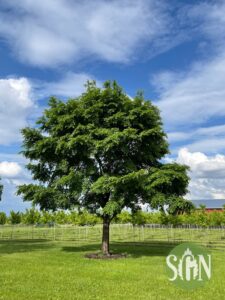
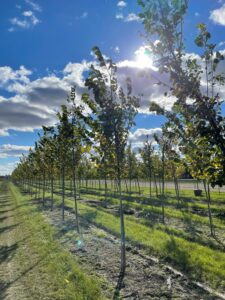
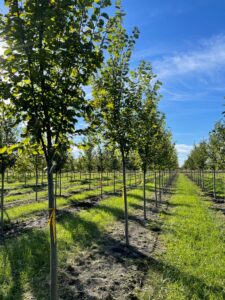
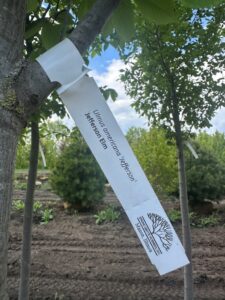
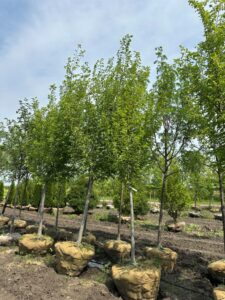
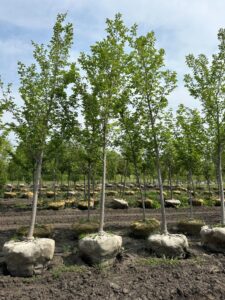
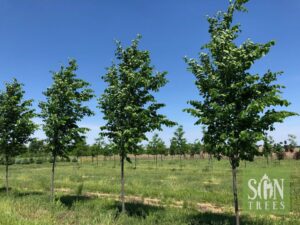

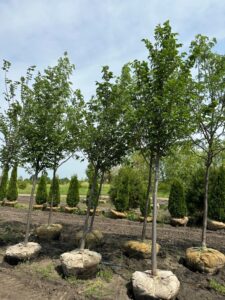
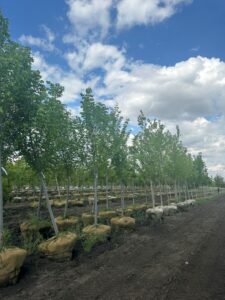
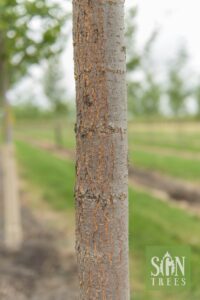
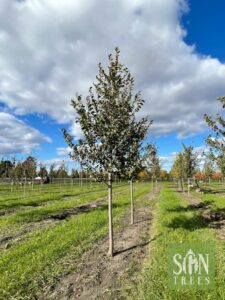
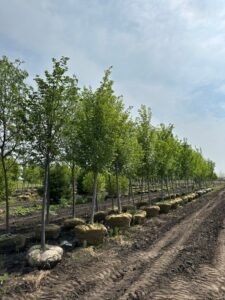
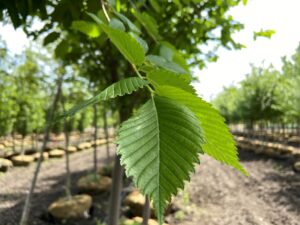
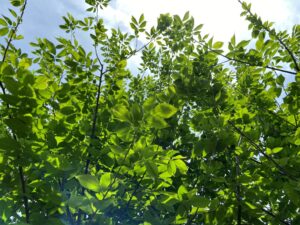
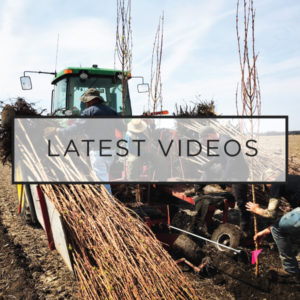



Leave a Reply